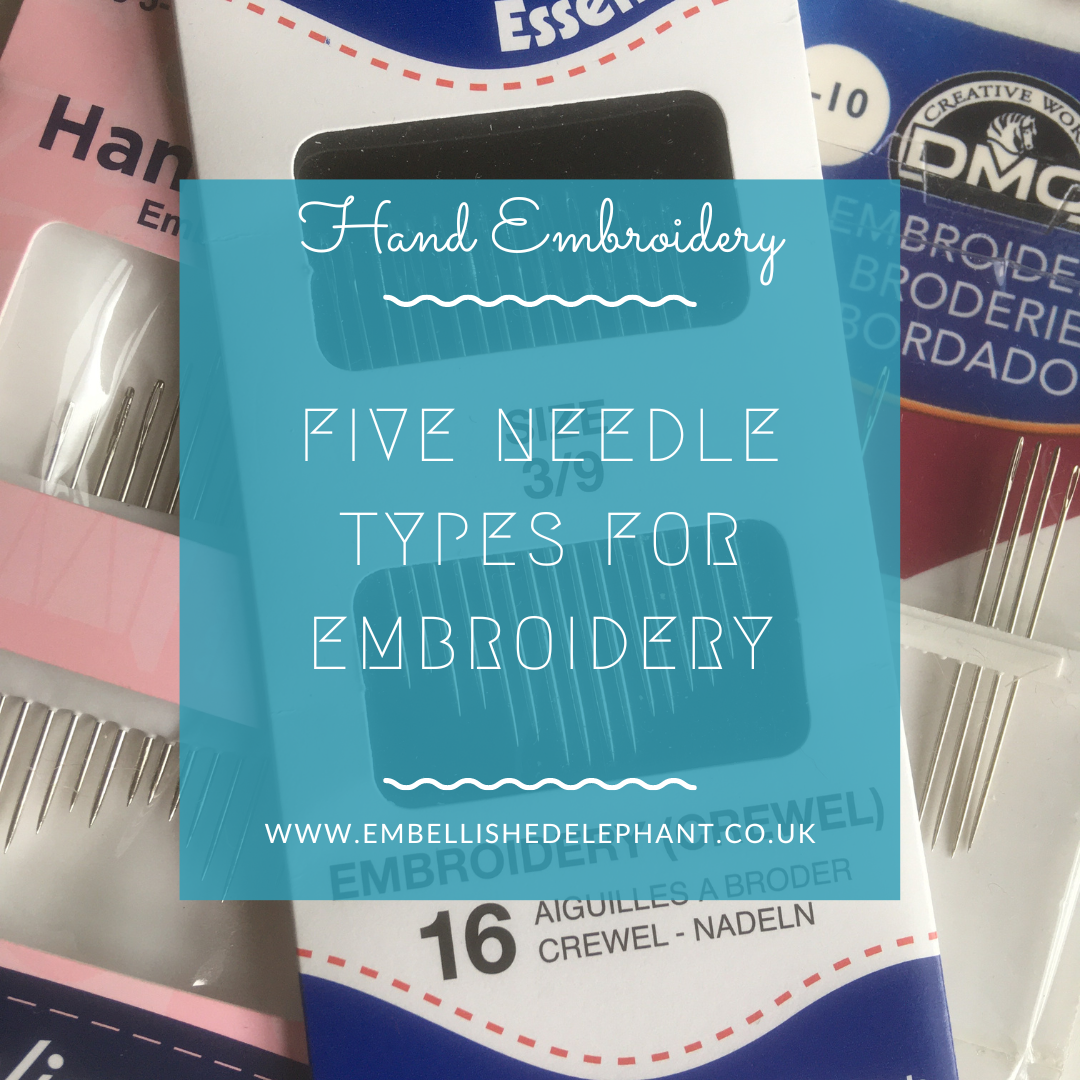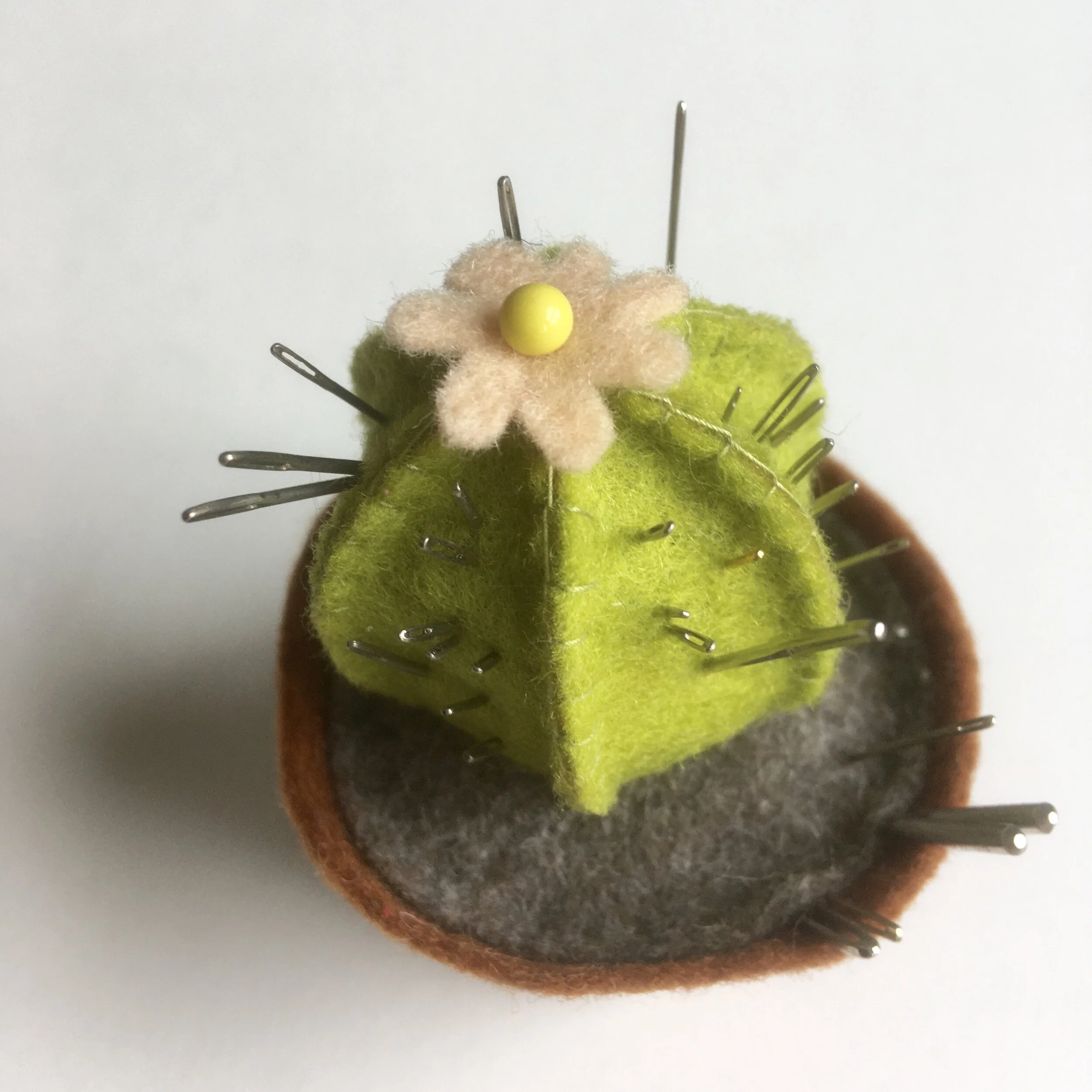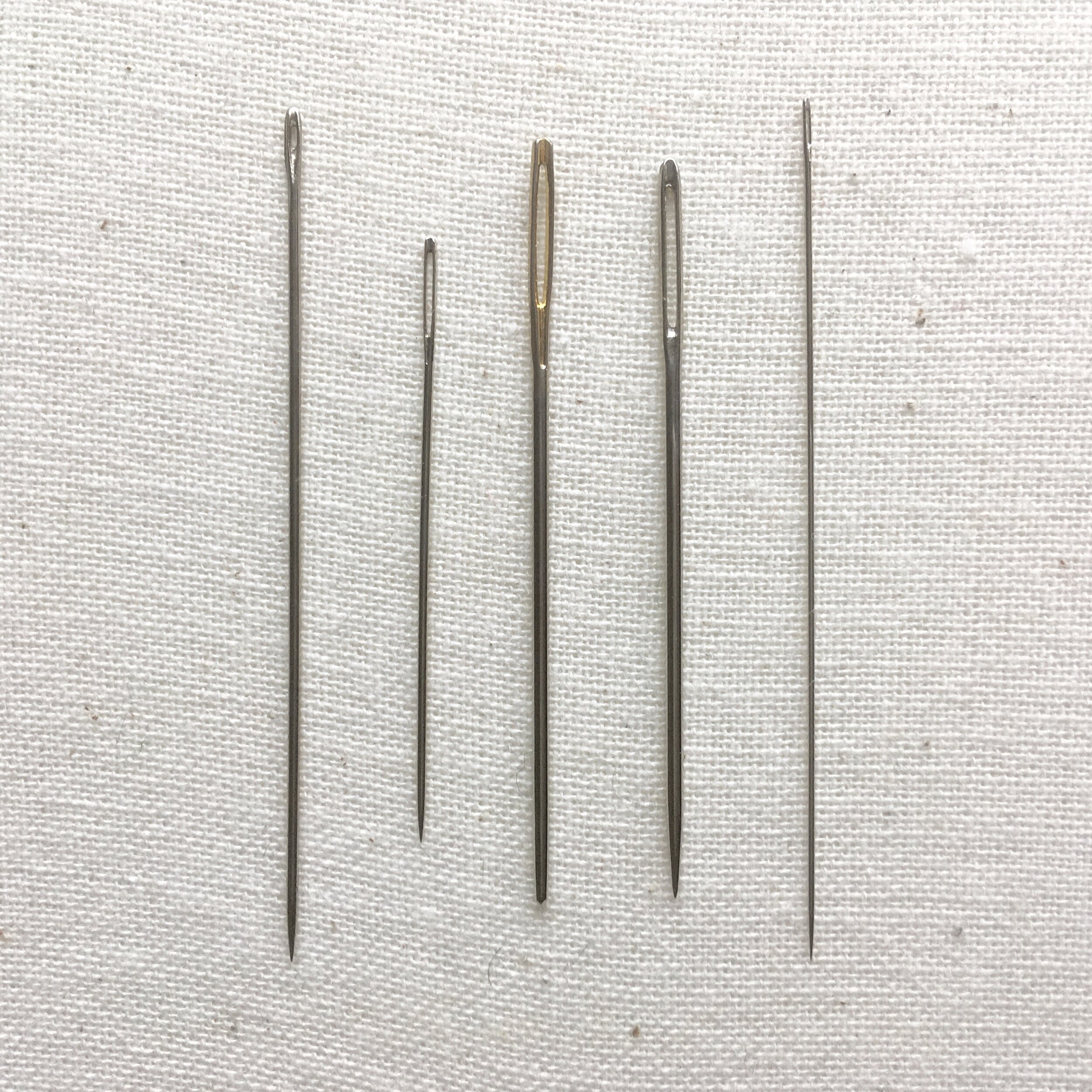My favourite pin cushion isn’t a pin cushion but a ‘needle’ cushion. I’ve accumulated many needles over the years and in this pin cushion I can sort them into their different types (I also love that they look like the spines on a cactus).
I find that most of the time it doesn’t matter what type of needle I use (as long as it has a decent point, a big enough eye and isn’t too thick) but it’s well worth being able to tell the different types of needles apart.
Here are the five different types of needles I use for hand embroidery (shown from left to right in the picture below):
Sharps - are used for general hand sewing, they have a small eye as generally only one strand of sewing thread is used at a time
Crewel - this is the needle to use for hand embroidery it has a slightly longer eye than a sharps needle to allow threading of multiple strands of thread
Tapestry - has a large eye & blunt end to pass thick tapestry yarn through canvas without splitting it, thinner versions are also used for cross stitch
Chenille - is a cross between a sharps needle and a tapestry needle in that there is a large eye and a sharp point, it’s great for stitching with yarn on fabric (rather than canvas)
Beading - the thinnest needle so that it can fit through the smallest seed bead hole it is long and thin and can be very difficult to thread, it’s also really flexible.
Each of these comes in different lengths or thicknesses and if you want to read more about different needle types, diameter, lengths and what those numbers mean in terms of sizes then John James have a great needle guide.
Enjoyed this blog post? I share embroidery tips and a free embroidery pattern in my monthly newsletter. Sign up here to receive the newsletter on the 1st of each the month.



